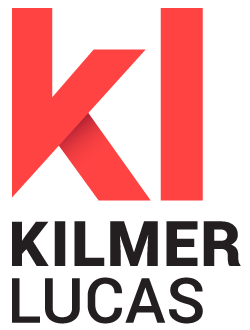After moving a novel omega-3 program through a successful Phase 2 program, Matinas BioPharma Holdings (OTCQB:MTNB) is now advancing two anti-infective drug candidates in the war against drug resistance.
“Our initial focus is to take powerful, but sparingly used, anti-fungal and anti-bacterial drugs and increase their safety and potency,” president and CEO, Roelof Rongen, says in an interview with BioTuesdays.com.
Health authorities around the world have sounded the alarm on deadly, untreatable superbugs, which could kill more people than cancer by 2050. In the U.S. alone, more than two million people a year incur drug resistant infections and more than 23,000 die.
“Today, people can die from a drug resistant strain of strep throat,” Mr. Rongen points out.
The company’s lead program, MAT2203, is an oral formulation of Amphotericin B for serious fungal infections, which is scheduled to begin Phase 2a testing in collaboration with the NIH. MAT2501 is an oral formulation of amikacin for severe hospital-acquired bacterial infections, which is scheduled for an IND filing in the fourth quarter this year.
In June, Matinas reported data from a head-to-head study that showed its MAT9001, a prescription-only omega-3 fatty acid-based composition under development for the treatment of hypertriglyceridemia, demonstrated superiority against Vascepa in reducing lipids, triglycerides, apolipoproteins and PCSK9 levels.
“The regulatory environment for the development of anti-infectives is much more conducive for an early-stage biotechnology company, given the tremendous unmet medical need and governmental support and incentives,” Mr. Rongen says.
“The omega-3 cardiovascular space is a much more typical regulatory environment with regulators carefully managing risks versus benefits, as we saw with the FDA’s decision in 2013 against expanding the approved use of Amarin Pharmaceuticals’ Vascepa.”
Mr. Rongen explains that MAT9001 is a next generation omega-3 fatty acid composition of docosapentaenoic acid (DPA), which has a unique mechanism of action and is highly potent.
He says Matinas plans to explore partnership opportunities for MAT9001. “Given the strong data and unique orally available PCSK9-effect, we believe MAT9001 will benefit from further development in a partnership context.”
According to Mr. Rongen, anti-infectives are the core of the company’s future. “Our technology potential in this space is highly significant and should benefit from a favorable regulatory and government environment.”
Among other things, he notes that Congressional initiatives have included additional budgetary funding for anti-infective drug development, largely through the NIH, and the potential to seek Qualified Infectious Disease Product (QIDP) designation. QIDP designation makes anti-infective drug candidates eligible for fast track status, priority review, and a five-year extension of market exclusivity.
In addition, the NIH is offering Small Business Innovation Research grants and research contracts for anti-infective drug development.
Mr. Rongen explains that Matinas and the NIH are working together to develop oral cochleates, which are solid lipid particles that trap toxic drugs and deliver their payload to infected tissues, increasing their potency and eliminating toxicity. The company’s cochleate lipid delivery portfolio is under an exclusive license from Rutgers University.
“As a novel lipid-crystal nano-particle delivered formulation of amphotericin B, MAT2203 has the potential to be a groundbreaking advancement in anti-fungal treatment,” he contends.
Amphotericin B is the anti-fungal of choice for immuno-compromised patients. While it is an effective killing-agent, it has the potential for significant toxicity, including a high risk of liver and kidney damage. Despite limitations in its use, the global market for amphotericin B is about $700-million.
Mr. Rongen points out that Matinas’ oral formulation has significant advantages over current IV-only administration of amphotericin B, including efficacy and little-to-no kidney toxicity in animal models, compared with current amphotericin B therapy.
“This differentiation supports the potential to capture and expand the $700-million global amphotericin B market,” he says, adding that the safety and tolerability of MAT2203 also have been demonstrated in a Phase 1 human study.
The treatment protocol for a Phase 2a study in patients with refractory mucosal fungal infections is under final review in collaboration with NIH, which will conduct and pay for the study. The study is expected to begin in the current quarter, with data expected in the first quarter of 2016, or earlier under certain circumstances.
If the data is positive, Matinas plans to engage with the FDA and propose and agree on the details of the further development program for MAT2203.
The company is also developing MAT2501 with the same technology to deliver amikacin in an oral lipid-crystal nano-particle cochleate formulation. Amikacin is a very potent gram-negative aminoglycoside antibiotic. It is administered intravenously but also has been linked to significant side effects.
Of the two million people annually in the U.S. who acquire serious infections that are resistant to one or more antibiotics, about 700,000 are gram-negative infections, such as pseudomonas lung infections, hospital-acquired bacterial infections and sexually transmitted diseases, including gonorrhea.
According to Mr. Rongen, gram-negative bacterial infections are characterized as the No. 1 unmet medical need of infectious disease specialists. Effective first-line treatment of serious infections requires use of broad-spectrum antibiotics, with activity against a broad range of bacteria. However, many strains of bacteria have mutated over time, developing resistance to existing drugs.
MAT2501 has demonstrated efficacy in proof-of-concept testing in animal models. He says formal preclinical animal toxicology studies are ongoing at the NIH in preparation for an IND filing later this year and clinical trials in 2016.
“MAT2501 has the potential to be the first orally administered amikacin formulation without toxicity or side effects seen with IV treatment,” he contends.
Mr. Rongen notes that the cochleate portfolio is covered by 17 issued patents, with protection extending through 2027, as well as 20 pending U.S. and foreign patents, which would extend protection through 2033.
At the end of June, Maxim Group analyst, Jason McCarthy, initiated coverage of Matinas with a “buy” rating and price target of $6, saying that with its current low valuation and potentially disruptive technology, “we see an opportunity in Matinas for investors.” The stock closed at 92 cents on Friday.
“Better delivery, no toxicity and oral pills could translate into more physician use and thus significant revenue opportunity,” he said.







